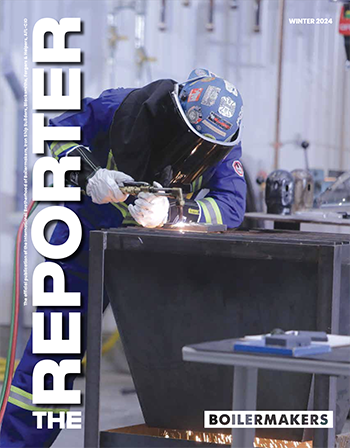Reaching 100% renewables in the United States by 2030 or 2040 would cost $4.5 trillion.
Rapid transition ignores unprecedented obstacles, environmental fallout and more
Someday, U.S. electrical power generation may come from 100% renewable energy consisting almost entirely of wind and solar. But predictions of that happening within 10 or 20 years are unrealistic. There are simply too many obstacles standing in the way, among them: the massive investment of capital that would be required, the disruption of entire industries, technical challenges, and considerable societal and environmental impacts.
Certainly, major advances have been made with wind and solar over the past few decades. Generous government subsidies, along with policies favoring wind and solar, have helped ensure their success. Manufacturing costs for wind and solar energy have fallen substantially, and utility-scale battery storage has begun to address the inherent limitations of these technologies due to their intermittent nature (lack of electricity production when the wind doesn’t blow or the sun doesn’t shine).
In 2018, U.S. investments in renewables totaled $48.5 billion. Wind energy accounted for 6.5% of U.S.-installed power generation, solar just 1.5% (U.S. Energy Information Administration).
Getting from 8% combined wind and solar to 100% would require investment on a colossal scale. And the build-out itself would face daunting challenges.
Renewables’ $4.5 trillion price tag
A 2019 study by the consulting and research firm Wood Mackenzie estimates that reaching 100% renewables in the United States by 2030 or 2040 would cost $4.5 trillion — from a budgetary perspective, about $35,000 per U.S. household, assuming a 20-year term.
The current capacity for wind and solar, now at 130GW (gigawatts), would have to be increased by 1,600GW just to replace existing traditional energy sources.
Another 900GW of backup energy in the form of batteries and pumped storage would also be required.
But the $4.5 trillion price tag does not tell the whole story. The study does not include estimates for stranded costs of fossil fuel and decommissioned nuclear plants, or the jobs lost in industries that build, operate and maintain those plants, or mining industry or transportation job losses. Nor does it account for economic losses to communities dependent on those plants and those jobs. If these costs were included, the price tag would, of course, swell.
Substantial technical obstacles remain
Although renewables have made considerable progress in the United States, they face challenging technical roadblocks.
The intermittent nature of wind and solar means that their output fluctuates according to how much the wind blows and the sun shines. They may produce at 40%of their rated capacity, some other rate, or not at all. Backup systems must be in place to account for these fluctuations, which typically means standby gas plants that are fired up as needed or utility-scale battery systems.
SF6 is the most potent greenhouse gas in existence – 23,500 times more warming than carbon dioxide (CO2).
But lithium-ion batteries, the predominant technology in use today, are not only expensive but they can only store electricity for the short term, generally two to four hours. Without backup from traditional sources, such as natural gas, long-term battery storage will be needed; and that technology is yet to emerge.
Another major challenge is how to connect far-flung wind and solar generation facilities to the grid so that the electricity they produce reaches the appropriate markets. This will entail major investments in new transmission lines.
According to the Wood Mackenzie study, the 200,000 miles of existing transmission lines would have to be doubled in order for the United States to achieve 100% renewable energy.
Public acceptance is not guaranteed
While support for clean energy is strong, not everyone wants a wind farm or utility-scale solar installation or transmission line in their neighborhood, let alone their own back yard. Concerns about wind turbine noise and spoiled vistas have been widely debated. Massively expanding wind and solar will create conflicts where planned installations clash with community, farming, public use and other land use requirements.
Public outcry against the damage caused by wind and solar to wildlife—especially the deaths of birds and bats—will likely intensify as their mortality numbers increase dramatically.
Managing fluctuating, intermittent energy sources across the United States increases grid complexity and raises difficulties of ensuring reliability and affordability of electric service to customers.
Environmental impacts must be addressed
Bird kills, turbine noise and blighted landscapes are not the only environmental considerations facing wind and solar energy. Manufacturing, transporting and installing these systems requires the mining and processing of enormous amounts of minerals and the production of steel, concrete and other materials. Some of the materials are toxic and harmful to the environment; some contribute to global warming.
In “The Dark Side of Renewable Energy” (Earth Journalism Network) author Liu Hongqiao explains the ecological destruction of areas in China that are mined for their rare earth metals, many of which go into wind and solar energy components. Mining these metals has left behind toxic substances poisoning both land and water. Many areas of the world have little or no systems designed to reclaim the toxic materials used in wind turbines and solar panels once they are damaged or are decommissioned at the end of their life cycle (typically 20-25 years for wind turbines, 25-30 for solar panels).
Another serious issue is the leakage of sulfur hexafluoride, or SF6, an insulating gas used widely in the electrical industry. According to a BBC article, SF6 is the most potent greenhouse gas in existence—23,500 times more warming than carbon dioxide (CO2). And the gas can persist in the atmosphere for more than 1,000 years.
There is concern, says the BBC, that by 2030 the construction of new wind farms across Europe will increase the installed base of SF6 by 75%, furthering emissions of this powerful greenhouse gas.
Getting to 100% decarbonization
The limitations and challenges of renewables are by no means a reason not to embrace them. Mankind’s ability to check global warming demands strong action and innovation.
But the mindset that only renewables can decarbonize the electricity generation sector and significantly impact climate change mitigation—and that we should rush headlong into a race to shut down fossil fuels and nuclear energy—is shortsighted and outright wrong.
Every source of energy has its challenges and limitations, even hydro and geothermal. But we should not turn our back on any energy source simply because solving its associated challenges is difficult. We will need every energy source decarbonized to the extent that it is feasible to ensure that clean, reliable and affordable electricity is available to all of humanity.
Getting to 100% decarbonization is a worthy aspiration, and perhaps wind and solar can lead us there. But reaching that goal in the next 10 to 20 years is simply not going to happen. We will need traditional forms of energy for a long time to come, at least to 2050 by some estimates.
Advances in carbon capture, use and storage and other technologies may make traditional energy sources viable even further into this century. We must demand that CCUS and other technologies be properly funded, explored and scaled up so that we can deploy any and all solutions to save our planet and secure the quality of life to which all of humanity strives.






